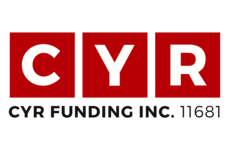How to Finance a Home Renovation
Renovations can mean a new kitchen, bathroom, upgrading furnace and electrical, to fully gutting the property and installing new drywall, pot lights, tiling, trim, painting, windows, doors, stairs, hardwood flooring, ceramic sinks, stainless steel appliances, roof, landscaping, finished basement, add an addition to the house, and much more.
The finishes you choose for yourself, resale, or rental will be different. For a rental property, you may choose to stick to basics, such as furnace, electrical, windows, basement and finishes that are not high end.
Things that add value are adding a room, addition or second floor, increasing living space, finishing a basement with a separate entrance, or splitting the basement into partial use for the owner, and part for rental or parents. Updating kitchens and bathrooms add the most value and the “wow” factor. Things that do not add much value to the property are swimming pools, in-home theatres, giving you an increase of only 25% to 50% of their cost.
If the renovation is for your personal enjoyment and you can afford it, do not look at it as an investment, unless you are selling with the next year or so. That’s because styles change, there will be wear and tear, market values can decrease; and if you previously financed the renovation costs, you will have any profit eaten up by interest. You have to decide if it makes sense for you.
In order to obtain financing, you will need drawings or a list of the work you intend to do, with a detailed budget and contractor’s estimate or construction contract, to determine the total cost of renovations.
Your mortgage broker will arrange for a qualified appraiser to determine the current “as is” value as well as the “completed” value based on your drawing, budget and schedule of finishes. For example, tile vs. marble, etc., taken you can borrow usually up to 75% or 80% of the completed value. This process is the same whether the home will be owner occupied, rented, or for resale.
The construction funds are advanced as the construction progresses.
For example, if you borrowed a 2nd mortgage of $150,000 to renovate, it might be structured $50,000 to be advanced when 1/3 complete, and $50,000 when 2/3 complete, and $50,000 when fully completed. Usually, an appraiser will do a progress inspection report to confirm the percentage of work completed.
The lender will hold back 10% of each advance in accordance with the Construction Lien Act until 45 days after completion. You should withhold 10% from your contractor on each payment until 45 days after completion to protect your position in case any liens are registered by your renovator or his subcontractors or workers. Liens are a subject requiring another article to discuss them. This financing will usually be through a private lender.
Once the property renovation is completed, a new mortgage can be arranged to combine the mortgages into one mortgage with a good interest rate, with either an “A” lender if you qualify, or a “B” lender if you do not. This will still be less expensive than a private lender.
For proper advice on your situation, contact an experienced mortgage broker.
Written by:
Rena Malkah
CYR Funding Inc. #11681
905-731-1111 Ex 229 (b)
647-838-5061 (c)
rena@cyrfunding.com


